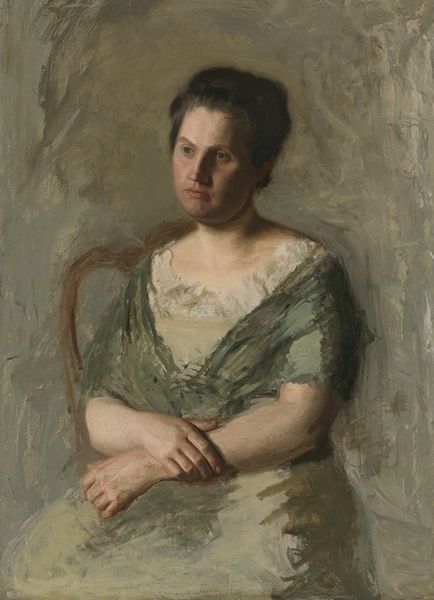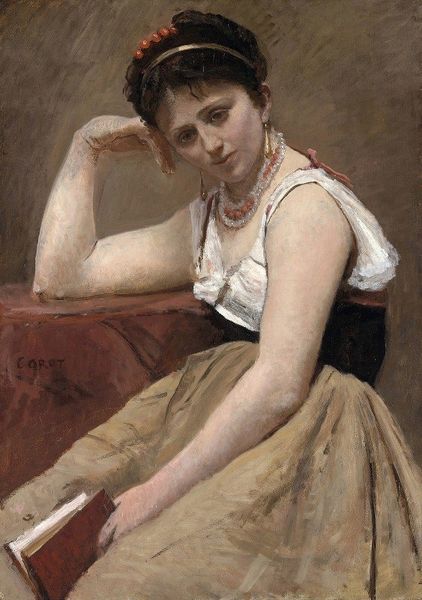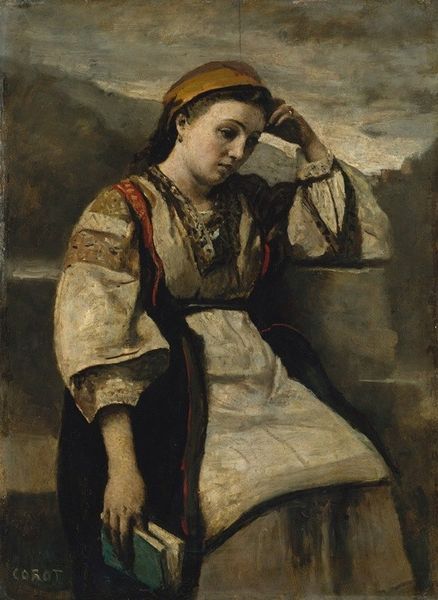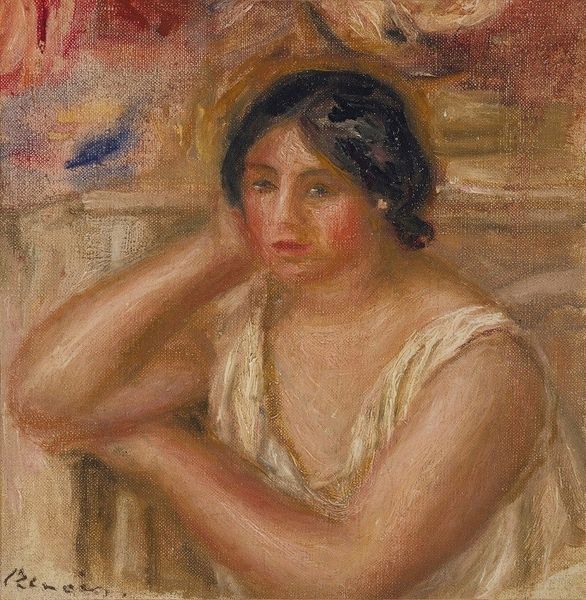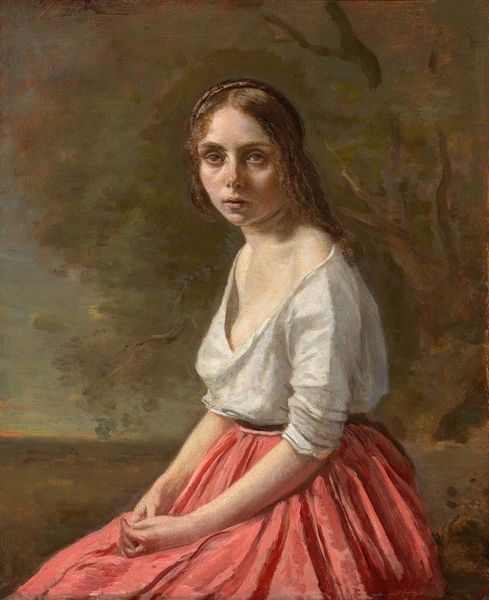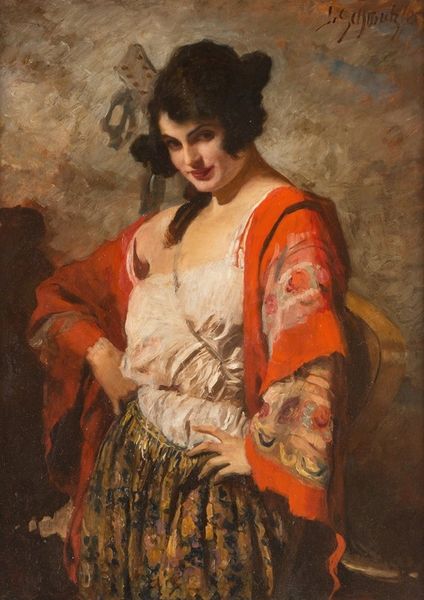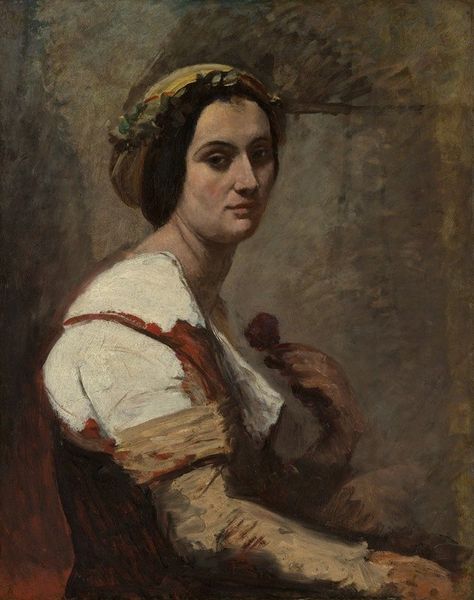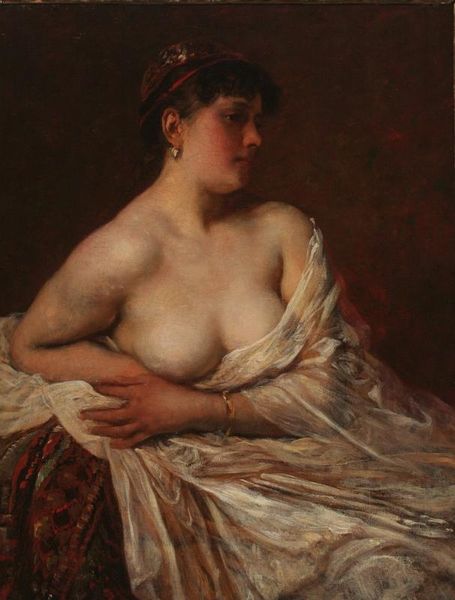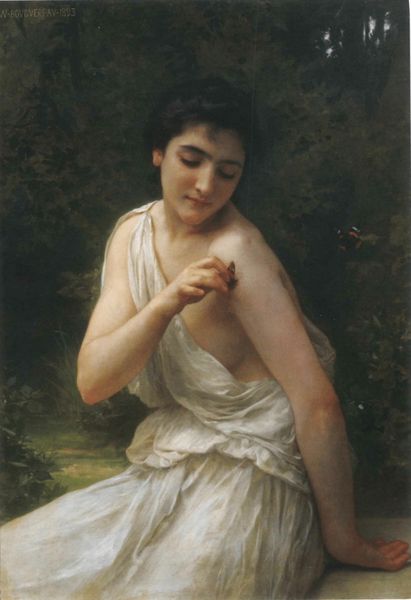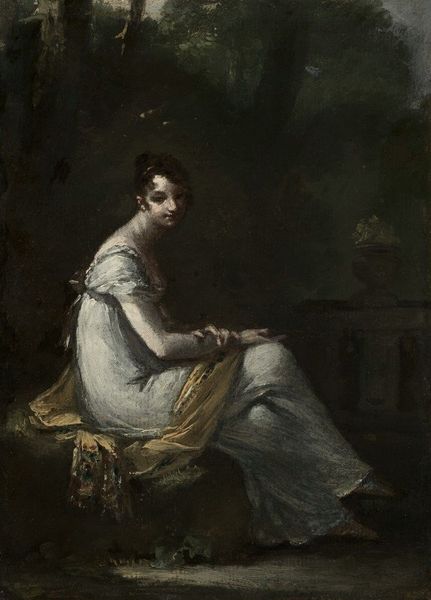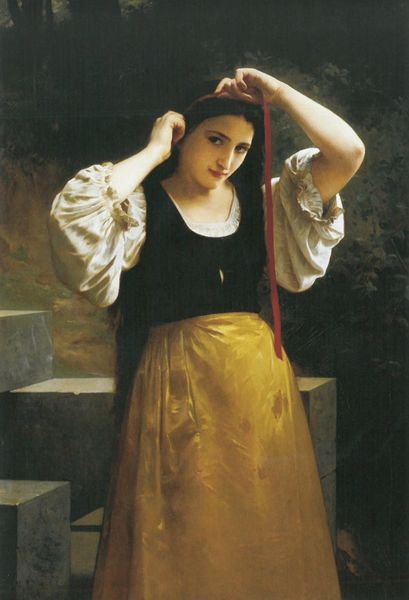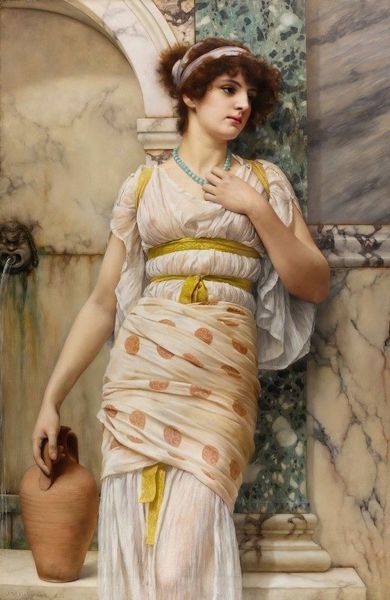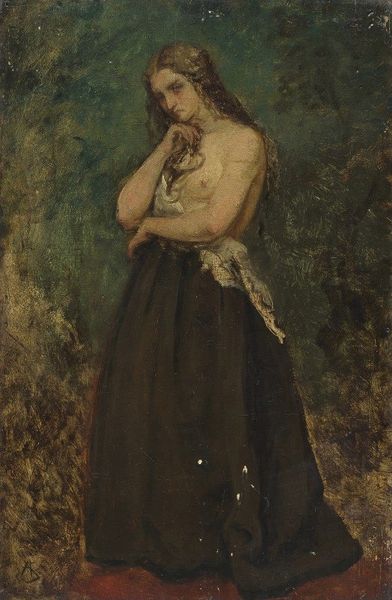
Copyright: Public Domain: Artvee
Curator: This is Camille Corot's "The Muse-History," an oil painting dating back to about 1865. What strikes you about it? Editor: There's a quiet intensity. She seems lost in thought. It feels melancholic, almost like a faded photograph holding secrets. Curator: Indeed. Corot was known for bridging Romanticism and Impressionism. He places this figure, a muse of history, against an ambiguous backdrop. We must remember the historical painting was often used as propaganda. By placing an individual figure that does not engage in this trope, Corot perhaps is commenting on it, as he also seems more concerned with expressing mood. Editor: I’m curious about that ambiguity. It seems like a deliberate move to challenge the grandiose, often masculine, portrayals of history that dominated the art world. Where is she going, what history will she record? How much space will women and non-white people have in it? Curator: Absolutely. Look at the pose, she is gently resting on what appears to be architecture behind her, and clutching her scroll in her left hand. Yet she gazes downward away from them. What are we meant to think? Editor: Maybe a history yet unwritten, unaccepted by the male gaze in historical narratives? And this choice of oil paints give her and the backdrop this almost human and very organic vibe. She could not have been given this touch through more "illustrious" tools. Curator: A critical point! His contemporaries valued realistic images that served a certain elitist purpose. It reminds us that history is a construct, often favoring the powerful, overlooking alternative voices. Editor: I think he may have done what many other male artists from the era were starting to: placing a "timeless" or classic feminine figure as a counterpoint against traditional history themes, almost placing woman as history, instead of placing a woman in a role inside a given history. This shift challenges dominant power structures. Corot's piece asks viewers to actively consider who shapes narratives and for what purposes. Curator: I concur, which prompts important reflection on whose histories are being told, how they're told, and who controls those narratives still today. Editor: It certainly makes you ponder about how far—or how little—the politics of representation have progressed since Corot put brush to canvas. It may feel like an older painting at first glance, but really the painting pushes boundaries of how history and individuals mix.
Comments
No comments
Be the first to comment and join the conversation on the ultimate creative platform.
